Lying in Wait Ann Rule's Crime Files Vol.17 Read online
Page 10
What about that other murder that Dana Rose testified she had seen Jackie commit? Did she really see it, or was it a bad dream that blended with the reality of her nightmare life?
Detective Bob Regimbal was shocked when he rescued Dana Rose and her little sister from the Schuts and Bernie Oldham. The abuse Dana suffered stunned him, and he was amazed that the child managed to survive.
She made it to adulthood, but her life has not been easy. The only family she ever knew gave her the cold shoulder after she testified against Jackie. Dana Rose grew up in foster homes, many of them abusive.
She was a teen when she gave birth to a daughter who brought love and light into her life. “She was my angel,” says Dana Rose. But she had a serious heart condition and died in 2004 at age fourteen.
Although Dana Rose is now stable and happily married to a supportive husband, she admits that she attempted suicide many times over the years. “It’s a miracle I’m still here. I’ve been close to death many times, and I’ve often wondered why I survived,” she tells me. “It makes me think there is a reason I’m here—that there is something I’m supposed to do to help others.”
Dana Rose has helped others. When she gathered the courage to testify against Jackie Schut, she prevented her from hurting more people. Few souls could have stood up against evil the way Dana did.
In my opinion, Dana Rose is a hero. But she is also an enigma—one more mystery in this strange case.
She herself recognizes this, and she wants the answers more than anyone. The biggest question for her is her identity.
Dana Rose would be thrilled to discover that she is not the biological daughter of Jackie Schut, and that somewhere out there, her real family still searches for her.
“I don’t look like anyone in my family,” she points out. “And I’ve never seen a picture of myself under the age of three.”
When she was a little girl, going through boxes of family photos at the Gardenhires’ house, she asked why there were no baby pictures of her. “There were photos of everyone else from the time they were born,” says Dana Rose. “But not me.”
Gladys told her that none had been taken. I find that very odd. But Jackie is odd, and she neglected Dana Rose in so many ways, it would not be out of character for her to neglect to take her baby’s picture.
Dana Rose has seen her own birth certificate, but she questions its authenticity, because there are two birth certificates for Deanna. One states that she was born in Yakima, Washington, and the other in California. If Deanna’s birth certificate was forged, maybe Dana Rose’s was, too.
Dana Rose would like a DNA test to answer the question of her identity. The wheels are in motion to make that happen. If Dana Rose finds she is the biological daughter of Jackie Sue Schut, I hope she is not too disappointed. Even if they are genetically connected, Jackie’s actions do not reflect upon Dana Rose, who is a good person. I’ve gotten to know her while writing this book, and I’m proud to call her my friend.
Jackie Sue Schut swept across the country like a tornado, sucking up those who got in her way, their destroyed lives trapped in her vortex of peculiar evil.
Much of what Jackie Schut did made no sense. She has yet to explain any of it. She has yet to admit to any guilt in the deaths of Geneva Clemons and Cheryl Jones. She has yet to admit to kidnapping babies.
If, by some miracle, Jackie did speak out and tell all, it could answer questions that torment countless people. As I wrote this frightening story and watched it unfold on my computer screen, I found myself shaking my head at all the dark secrets I uncovered.
What About the Other Babies?
More than one investigator was quoted saying that they believed that the Schut case was related to at least half a dozen other infant abductions. Robyn Light, the victim witness manager who interviewed Dana Rose in the 1980s, says “I got the impression that she had witnessed Jackie sell many babies.”
Prosecutor James Fry always believed there was much more to this case than anyone could guess. When he reflects on it today, he says, “I’m convinced the Schuts were operating a kidnapping ring. My hunch is that these are not isolated cases.”
When she testified against Jackie in 1987, Dana Rose said she had seen Jackie murder another woman and sell her baby. But nearly three decades later, the details evade her. She has a vague recollection of a baby, and of columns—like those on the porch of a southern mansion. And she has an eerie feeling. But she remembers nothing more.
Dana Rose does recall that during the January 1980 trip to Athens, Alabama, they stopped by hospitals so often that it became a tedious routine. Jackie would go in, and they would wait in the car for her to come out.
She was possibly shopping for infants to abduct. Larry Clemons remembered seeing a strange woman staring a little too intently at James in the hospital nursery. Whether or not this was Jackie, I don’t know. Jackie approached Geneva at the grocery store, but she—or perhaps someone else in the ring—could have been tracking the Clemons family for a while.
At the time Jackie Schut was committing her crimes, hospitals were one of the most common locations for infant abductions.
In recent years, most hospitals have tightened the security in their nurseries, but in the 1980s, they were often wide open to any stranger who happened by. The kidnapper typically donned a nurse’s outfit, and mothers calmly handed their babies over to strangers. They believed, of course, that the smiling women in uniform were who they said they were, and that their babies were going to be tested or fed.
In many of these cases, the abductors were infertile and desperate to have babies, often because they were trying to keep restless boyfriends or husbands from leaving them. More often than not, the fathers were clueless, accepting the abducted infants as their own without question.
In most of these cases, the mother was not harmed—if you don’t count the searing agony that slices a mother’s heart in half when her child is missing. The women were not physically harmed in the majority of these instances, but that does not rule out the Schuts as suspects.
In the most horrific cases, kidnappers strike while a baby is still in utero—literally cutting a baby out of its womb and sacrificing the mother.
The deaths of Geneva Clemons and Cheryl Jones may very well have been inconsistencies. Maybe, as Lee Schut claimed, no one was supposed to be killed. Maybe the Schuts had stolen other babies whose mothers are still alive and searching for them.
There are numerous cases of babies abducted in the 1970s and 1980s—some with similar MOs to that of the Schuts. In December 1984, two-month-old Donel Jacoby Minor was abducted in Inglewood, California, by a man posing as a photographer. Harold Lee Schut was living in neighboring Nevada around that time, and the composite sketch of the abductor resembles him. “The Inglewood case could have been a Schut kidnapping,” says Prosecutor Jimmy Fry. “It is too similar to be ignored.”
If Donel Jacoby Minor is still alive, he would now be thirty years old.
Chances are, we won’t connect the Schuts to the Minor case or find the answers about Dana Rose’s true heritage before this book goes to press, but I will be sure to post updates on my webpage.
Dana Rose and Tracy first met each other on that horrible day in 1980, never suspecting that they would one day appear on television together. A quarter of a century later, in 2005, they met again—this time on the stage of the Montel Williams Show.
Larry Clemons was there, too, and he said that Dana Rose had arranged the on-the-air meeting because she “wanted to know if we’re mad at her. We’re not.”
Tracy looked Dana Rose in the eye and told her, “We both lost our mothers. I don’t have a sister. If you ever need a sister, I’ll be your sister.”
Prosecutor James Fry, who was also a guest on the show, said, “There was not a dry eye in the place.”
Tracy and her father travel to Wetumpka to testify each time Jackie Schut is considered for parole.
If Jackie Sue Schut is ever paroled, Che
ryl Jones’s family will fight to make sure she is finally charged with her murder. Amanda has recently started a blog, called My Journey for Justice, where she shares her struggles to find justice for the mother she does not remember yet misses profoundly.
Amanda’s life has not been easy. Her stepmother seemed to be threatened by the fact that Cheryl had been the love of Dennis’s life, and she would not allow her name to be mentioned in their home. Though she was close to her father, Amanda experienced little warmth from her stepmother. Dennis eventually divorced, and he dated a wonderful woman with a generous heart who encouraged him to talk about Cheryl. Sadly, Dennis drowned in Cayuga Lake, one of central New York’s glacial finger lakes, in August 2009 at the age of fifty.
Both Detective Bob Regimbal and Prosecutor Jimmy Fry are involved in charitable work. After an illustrious career that included a position as a judge on the Alabama Court of Criminal Appeals, Fry is now the executive director of Legal Services Alabama, a nonprofit organization that provides free legal services to low-income Alabamians.
Bob and his wife, Kerrie Regimbal, rescue horses and bring them to live on their ranch in Selah, Washington. For nearly a decade, they have saved dozens of horses—some starving and others headed toward the slaughterhouse. Their nonprofit organization, Kidz N Horses, pairs neglected horses with children with low self-esteem.
* * *
* Asterisks indicate that a name has been changed to protect the individual’s privacy.
SECRETS OF THE AMOROUS PIZZA MAN
“Things are seldom what they seem,” Gilbert and Sullivan wrote in their musical H.M.S. Pinafore. “Skim milk masquerades as cream . . .”
All people hide things, but rarely do they have secrets as dark and dangerous as those of Robert Alan “Al” Baker. At first glance, Baker does not appear threatening. He is a short man who resembles a concrete garden gnome with wisps of white hair curling around his face, and deep-set eyes that can be alternately glaring and seductive. Far from attractive, he has somehow managed to captivate his share of females—including a few very smart women, impressing them by exaggerating his academic achievements.
While Baker earned a modest undergraduate degree from California’s Sonoma State University, and worked as a cryogenics technician for the Raytheon Polar Services Corporation (RPSC), he is not the brilliant scientist he claims to be.
Who is he?
His name is so common that he can easily camouflage his identity, altering it a bit as needed by changing spellings. At this time he is “R. Allen Baker.” His friends call him “Al.”
He was “Robert Baker” at his graduation from Sonoma State University, where, clean shaven, he stood smiling for the camera in his cap and gown, eyes strangely obscured by reflective sunglasses. In one of his run-ins with the law, his attorney claimed that he was an “internationally known expert in cryogenics,” a field within physics that explores the behavior of matter in extreme cold.
In actuality, Baker did work at a basic level in the cryogenics field. In 2002, he gave a brief presentation at a National Science Foundation meeting, explaining how to purchase the difficult to procure liquid helium used as a coolant for the advanced telescopes used in astrophysics research in freezing temperatures. But his “expertise” does not extend far. An article self-published by Baker and posted on the web was apparently intended to impress but resulted in a serious teasing from science bloggers—one of whom compared it to an elementary school science project.
Most women wouldn’t be drawn to him, and yet he has never failed to attract those females who had something about them that he wanted. He was charismatic and interesting, and he regaled prospective lovers with his stories of his fascinating past.
When Al Baker met Kathie Ann Sharp, née Hill, in the RPSC Denver offices in the mid-1990s, they were both employed there full-time. They were nearing middle age—she was approaching forty, and he was a decade older. The two had something in common. They were not afraid of the cold, and were, in fact, drawn to it.
In his role as a physicist in the art of cryogenics, Baker studied the minutiae retrieved in experiments in Antarctica. Kathie was a genius with advanced science degrees, including a master’s in meteorology. In 1993, she became the twenty-ninth woman to winter at the South Pole, and she was the first female to spend an entire winter there as a meteorologist.
Kathie Ann Hill was born in Fairbanks, Alaska, on July 24, 1958. Her parents, David and Barbara Hill, raised her and her three brothers, David, Richard, and James, in Boulder, Colorado. A happy child, Kathie always tried to see the bright side.
The Hills were a musical family, and Kathie’s brothers Jim and Dave were members of the “Mary Jane Bann’d.” Iconic on a local level in the Colorado music scene in the 1960s and ’70s, they had a huge following with frequent gigs in Boulder and Aspen. Jim played the drums, and Dave played the guitar and wrote songs. Kathie wasn’t as musically talented as her brothers, but she loved watching and listening to them.
She was very young when she married her first husband, Thomas*. Her dreams were dashed when the marriage ended badly. It left her so emotionally fragile that she guarded her heart carefully after that. She dated infrequently, and was content to be with her close-knit family.
Kathie was sensitive and kind, and so up-front herself that she expected the same honesty from others. Despite the fact she had been badly hurt, she looked for the good in people. When she met Al Baker, she probably had no inkling that his charming personality hid a manipulative mind.
When Al was assigned to organize teams of scientists and their assistants and deploy them through the several stations of the Polar Program, he became a puppeteer, placing people where he wanted them—attractive women near his station, and men, whom he wanted to isolate for his own reasons, farther away.
Antarctica, which contains the geographical South Pole, lies at the southernmost tip of the world. Hardly a tourist spot, it is the coldest, driest, and windiest continent, buffeted by fierce winds that can knock down a grown man.
The few women brave enough to spend the coldest months “on the ice” have to be strong—both mentally and physically. To make their way from the central lodge to their living quarters or to laboratories, all “Poleys” have to snap a carabiner to a strong line strung between the buildings. Without it, people could literally blow away in the sudden gusts.
Kathie didn’t mind the arduous trips between the hunkered-down buildings.
She was a tough lady, but tender, too.
To reach the South Pole, employees must take a boat to New Zealand and pass customs there, before continuing the journey to Antarctica. One year, Kathie was on a boat out of New Zealand when a violent storm whipped up rough seas. She fell down iced-over metal steps and broke several bones. Their ship was in the midst of nowhere, and it would be two weeks before they reached a spot where her bones could be set properly. She was sedated to ease her pain for the long voyage to land.
Unfortunately for Kathie in this instance, she was a fast healer. Her bones had begun to set before she reached a hospital. They had to be rebroken and set correctly.
The pain never really went away, but Kathie kept her job at the South Pole. She was so enthusiastic about her career that she started a foundation to encourage high school girls to study science. Her favorite part of her day in Antarctica was when she released the weather balloons that sent back information.
The pay was good, but few would choose to travel so far from home to work in a dark and frigid world. The icy realm became a romantic place for Kathie and Al in the seemingly endless months they spent there, working on Raytheon’s Polar Program.
Kathie was flattered by the attention of the articulate man who appeared to have vast knowledge in several scientific areas.
There weren’t very many Raytheon employees on the ice at any given time, so the crews bonded and became close as they sought surcease from the icy winds and bitter cold.
Employees congregated in the central lodge, where
movies were shown, or they could visit others’ rooms for more intimate gatherings.
Al Baker, several times divorced, was drawn to Kathie, but when she wasn’t looking, he also flirted with bush pilot Trudi Gerhart. The trio spent their free time together during the dark days when the sun was elusive.
Kathie and Trudi were adventuresses—brave enough to face the challenges of life at the bottom of the world. Both women were buxom, their blond hair shot with gray. Al focused his attention on Kathie, who was taller than Trudi, and also a few years younger. He treated her like a princess, and it seemed every time she turned around, he gave her a romantic card.
Al eventually proposed to Kathie. But there was a problem: he was already married. He told Kathie that his marriage to Mary was an unhappy one and that they planned to divorce. Kathie was flattered by Al’s attention, but she was firm when she told him that she simply would not date a married man.
Her life was complete. She wasn’t looking for another husband, but she did enjoy the cards and flowers that Al Baker sent her. Al always had a stack of romantic greeting cards handy, but he had to go to great lengths to find flowers for the object of his desire.
It was a Victorian romance in an alien landscape, with Al showering Kathie with gifts. Suspiciously, a government audit revealed that taxpayers footed the bill for a number of questionable luxuries purchased by an unnamed Raytheon manager: a tower of chocolates from Harry & David, expensive soaps from Venus Bath and Body. The audit does not provide concrete evidence that any of the questionable purchases can be traced to Al Baker, but it underscored the lax oversight that allowed a scoundrel free rein for romance in the icy realm.
Eyebrows were raised and chuckles were heard around the globe when 16,500 condoms were shipped to Antarctica just before winter fell in 2008. One would hope that with a winter population of fewer than three hundred folks, the quantity sufficed for those cold, lonely souls on the ice.
Condoms or not, Kathie was not about to rush into anything. On one occasion, when she was back home, Kathie and her niece Jami Hill were sipping margaritas and discussing men. Kathie was torn about what she should do about Al Baker.

 Too Late to Say Goodbye: A True Story of Murder and Betrayal
Too Late to Say Goodbye: A True Story of Murder and Betrayal Green River, Running Red
Green River, Running Red Bitter Harvest
Bitter Harvest Dead by Sunset: Perfect Husband, Perfect Killer?
Dead by Sunset: Perfect Husband, Perfect Killer?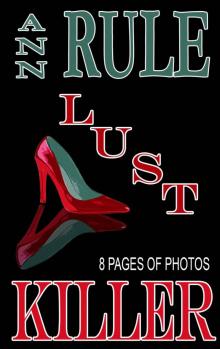 Lust Killer
Lust Killer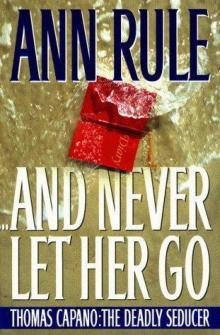 And Never Let Her Go: Thomas Capano: The Deadly Seducer
And Never Let Her Go: Thomas Capano: The Deadly Seducer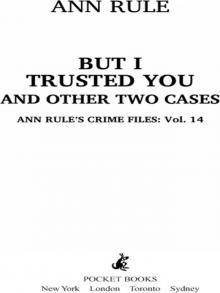 But I Trusted You and Other True Cases
But I Trusted You and Other True Cases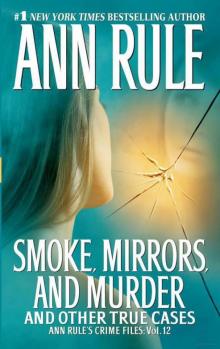 Smoke, Mirrors, and Murder and Other True Cases
Smoke, Mirrors, and Murder and Other True Cases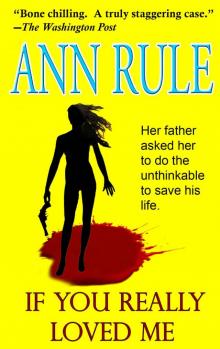 If You Really Loved Me
If You Really Loved Me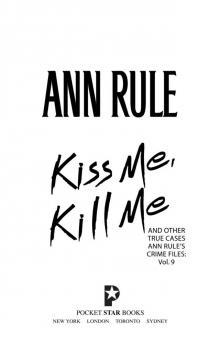 Kiss Me, Kill Me and Other True Cases
Kiss Me, Kill Me and Other True Cases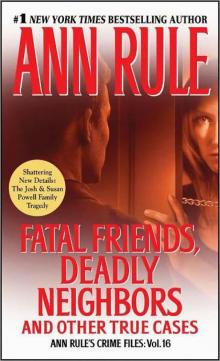 Fatal Friends, Deadly Neighbors and Other True Cases
Fatal Friends, Deadly Neighbors and Other True Cases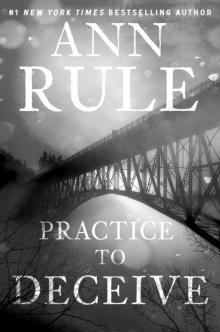 Practice to Deceive
Practice to Deceive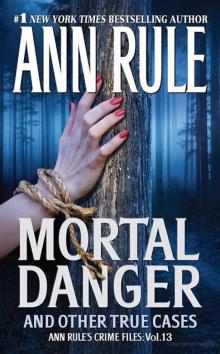 Mortal Danger and Other True Cases
Mortal Danger and Other True Cases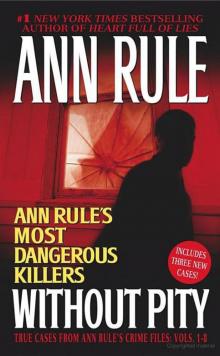 Without Pity: Ann Rule's Most Dangerous Killers
Without Pity: Ann Rule's Most Dangerous Killers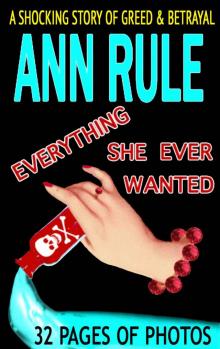 Everything She Ever Wanted
Everything She Ever Wanted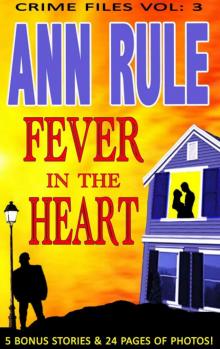 A Fever in the Heart and Other True Cases
A Fever in the Heart and Other True Cases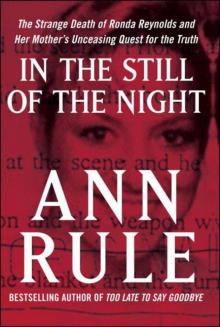 In the Still of the Night
In the Still of the Night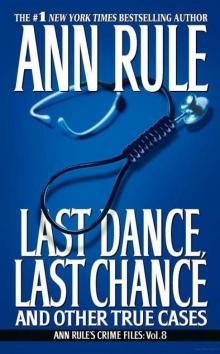 LAST DANCE, LAST CHANCE - and Other True Cases
LAST DANCE, LAST CHANCE - and Other True Cases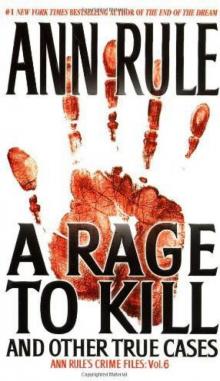 A Rage to Kill
A Rage to Kill The I-5 Killer
The I-5 Killer The Stranger Beside Me
The Stranger Beside Me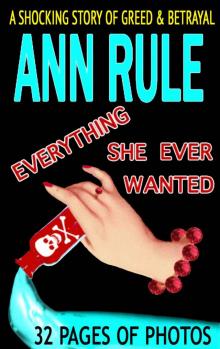 Everything She Ever Wanted: A True Story of Obsessive Love, Murder, and Betrayal
Everything She Ever Wanted: A True Story of Obsessive Love, Murder, and Betrayal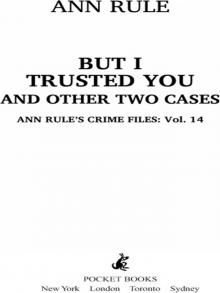 But I Trusted You
But I Trusted You Without Pity
Without Pity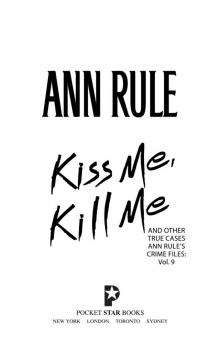 Kiss Me, Kill Me
Kiss Me, Kill Me Too Late to Say Goodbye
Too Late to Say Goodbye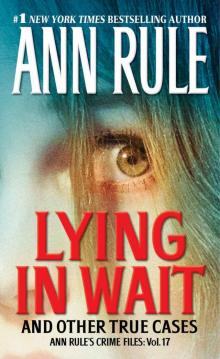 Lying in Wait
Lying in Wait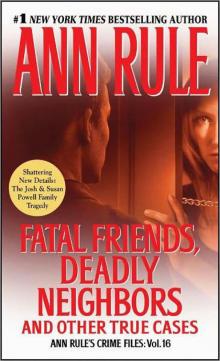 Fatal Friends, Deadly Neighbors
Fatal Friends, Deadly Neighbors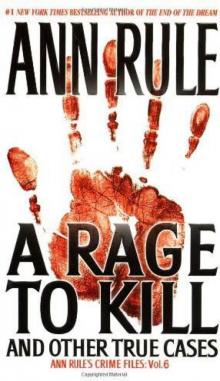 A Rage to Kill: And Other True Cases
A Rage to Kill: And Other True Cases And Never Let Her Go
And Never Let Her Go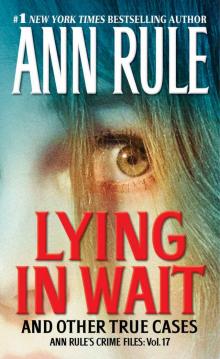 Lying in Wait Ann Rule's Crime Files Vol.17
Lying in Wait Ann Rule's Crime Files Vol.17 Blood Secrets: Chronicles of a Crime Scene Reconstructionist
Blood Secrets: Chronicles of a Crime Scene Reconstructionist No Regrets
No Regrets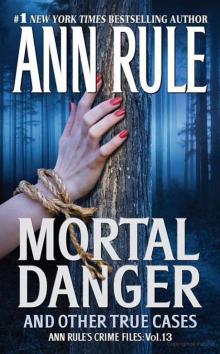 Mortal Danger
Mortal Danger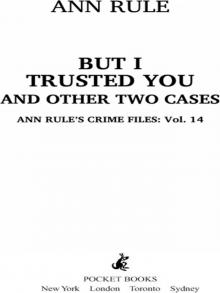 But I Trusted You: Ann Rule's Crime Files #14
But I Trusted You: Ann Rule's Crime Files #14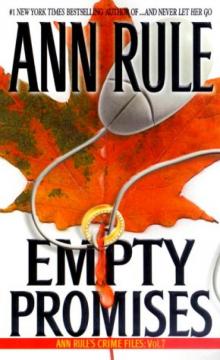 Empty Promises
Empty Promises Dead by Sunset
Dead by Sunset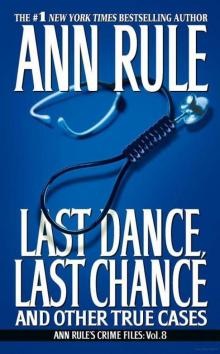 Last Dance, Last Chance
Last Dance, Last Chance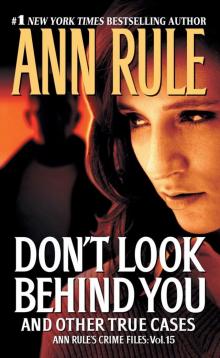 Don't Look Behind You
Don't Look Behind You